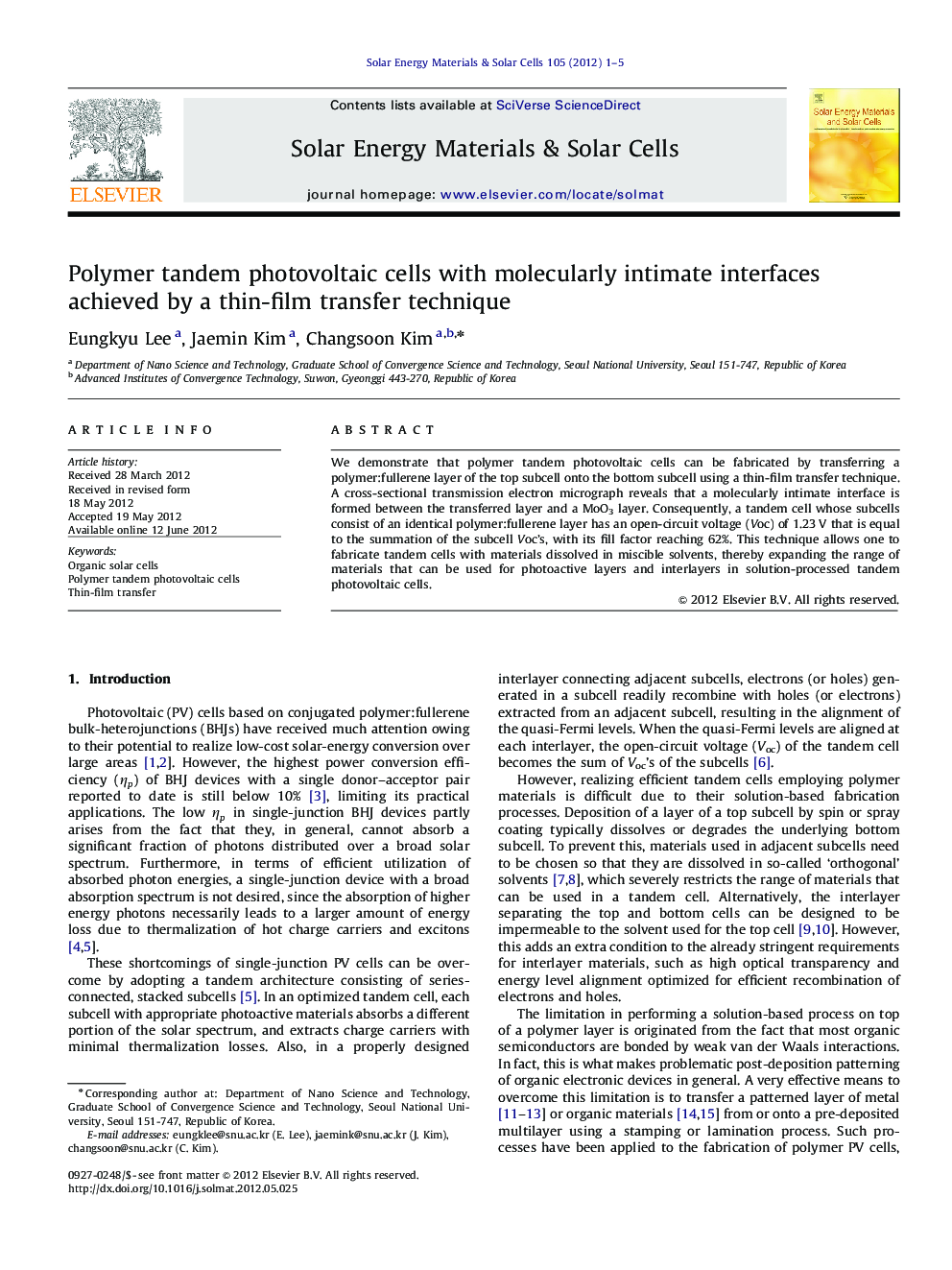| Article ID | Journal | Published Year | Pages | File Type |
|---|---|---|---|---|
| 78940 | Solar Energy Materials and Solar Cells | 2012 | 5 Pages |
We demonstrate that polymer tandem photovoltaic cells can be fabricated by transferring a polymer:fullerene layer of the top subcell onto the bottom subcell using a thin-film transfer technique. A cross-sectional transmission electron micrograph reveals that a molecularly intimate interface is formed between the transferred layer and a MoO3 layer. Consequently, a tandem cell whose subcells consist of an identical polymer:fullerene layer has an open-circuit voltage (Voc) of 1.23 V that is equal to the summation of the subcell Voc's, with its fill factor reaching 62%. This technique allows one to fabricate tandem cells with materials dissolved in miscible solvents, thereby expanding the range of materials that can be used for photoactive layers and interlayers in solution-processed tandem photovoltaic cells.
Graphical abstractFigure optionsDownload full-size imageDownload as PowerPoint slideHighlights► Polymer tandem photovoltaic cells are fabricated by a thin-film transfer technique. ► The interfaces created by this technique are intimate at the molecular level. ► The open-circuit voltage of the tandem cell is the sum of those of the subcells. ► This technique overcomes the solvent compatibility issue in solution processing.
